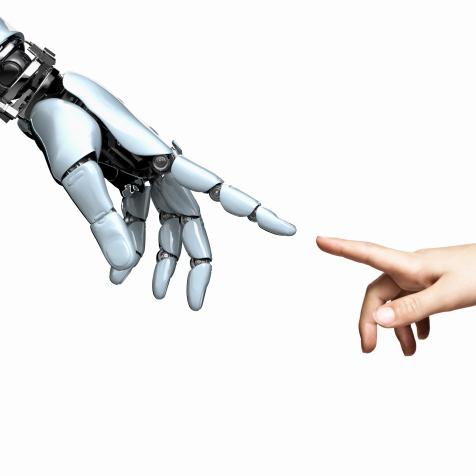
Maciej Frolow
Laser Cooked 3D-Printed Meals are the Future of Food
Whatever your tastes are it is highly unlikely that many of you are using 3D printers to create your favorite meals. Still, anyone interested in the future of food can find technologists printing out snacks, from steaks to cakes, at the push of a button. Now laser cooking has arrived and it is adding an entirely new layer of gourmet taste.
Trials at Columbia University are revealing how highly tailored food can be prepared using a 3D printer and cooked to a mathematically precise finish using infrared and blue light lasers. Printers are able to lay down millimeter accurate food designs that are then heated and seared with pinpoint accuracy.
Columbia’s Creative Machines Lab team is hoping to build an automated digital personal chef to deliver flavors, textures, and nutrition to suit individual tastes. So far their experiments with chicken have created laser-cooked samples that have the same flavor profile as conventional cooking, but shrink 50 percent less, and have double the moisture content.
“In fact, our two blind taste testers preferred laser-cooked meat to the conventionally cooked samples, which shows the promise for this burgeoning technology,” said project leader James Blutinger.

Marina_Skoropadskaya
3D printer printing pancake art using liquid dough.
Creating software that would allow chefs to make their own designs – a Photoshop of food – is the next step. “We need a high-level software that enables people who are not programmers to design the foods they want,” said group leader Hod Lipson. “And then we need a place where people can share digital recipes like we share music.”
Companies in the food industry regularly use ingredients injected into containers and molded into appealing shapes. But playing with food chemistry, texture, and processes like spherification, to create sweet or savory caviars, is often restricted to gourmet kitchens.
Now food printing and novel preparations are going mainstream. The world’s first 3D printing restaurant – Food Ink – has served up treats to diners direct from printer to plate. Meat substitute companies combine digital modeling with printing to create different cuts of steak, and meat textures with fat marbling made purely from plant proteins and fats.
Sugar and sweet treats were among the first food printer ingredients to become a hit with home consumers, making food personalization – and snacks that can be quickly customized – a growing trend. Miam Factory in Belgium 3D prints chocolate and laser engraves its macarons for customers. And now a crowdfunded chocolate printer will allow anyone to do it at home.

NurPhoto
A 3D printer is seen producing an ornament from white chocolate during the Young Couples Fair in Warsaw, Poland.
Or how about your own personalized 3D printed pizza? Well, it’s not all about printing takeaway foods and sugary snacks: personalized means getting the right nutritional content too. That could be people with medical reasons for special diets, or athletes looking to maximize nutrients for performance.
Recreating nutrient-rich foods from a precise recipe should be as simple as sharing a file on the internet, say Columbia’s engineers. Startup Anrich3D makes food printers that take data from medical assessments, health trackers and apps, and combines it to create individual meal plans based on ‘foodlets’ – rapidly printed ‘fast food’ that is cheap, healthy, and nutritionally balanced.
All of this could well change the way we think about and eat food. High on the list of positives is the fact that printed food can be healthier, lessen the environmental impact of food production – especially red meat – and cut waste.
Global food waste hit almost one billion metric tons in 2021. So emerging companies that turn food waste into tasty dishes and food decorations – like Natural Machines or Upprinting Food – are a welcome development. As food printing becomes more widespread, we may see instant printed and recycled meals as the dietary solution we were looking for.


















